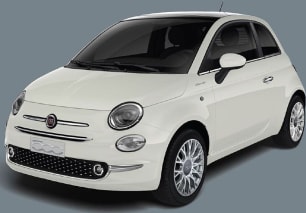As part of the update, the Fiesta ST gains new Recaro front sports seats that are firm and hug the body tightly. You feel well supported when cornering. The mix of synthetic leather and suede looks spot-on.
Like a number of sports-focused models, the ST features red stitching throughout the cabin - on the steering wheel, gearbox gaiter and air vent surrounds - and while it’s ubiquitous, it’s still a nice touch.
The chunky perforated leather steering wheel feels nice to touch, as does the metal gear knob.
Cabin materials are a mix of soft-touch and hard plastics, and there’s carbon-fibre-look inserts on the dash.
There’s no denying Ford’s dash design is a huge improvement over the previous-generation Fiesta that ran from 2009, but the current model still lacks the polish of the VW Polo. It’s about on par with the Hyundai i20 N, although the Ford’s layout is a little busier.
In saying that, it’s hard to fault the cabin’s functionality. It has a deep central storage bin, which is larger than most cars in this category, a decent sized glove box, two-and-a-half cupholders in the centre console and storage for narrow bottles in the doors.
There’s a wireless charging dock behind the gear shifter, two USB ports (one in the storage bin and one next to the charger), as well as a 12-volt charger.
It’s nice to see the ST still has a manual park brake, too.
The facelift introduced a 12.3-inch fully digital instrument cluster, and while some may lament the loss of analogue dials, it’s nice to see Ford taking the opportunity to improve the tech.
The multimedia is housed in a smallish 8.0-inch digital screen sitting atop the centre stack and it runs Ford’s Sync 3 system.
Sync 3 functions well, is hard to fault and the menu layout is easy to navigate, but it is being left behind by competitors with more modern and appealing graphics. The latest version in the new Ranger will no doubt be a major improvement, but we won’t be seeing it in this generation of Fiesta.
The diminutive size of the Fiesta ST is more apparent when sitting in the rear seats. It’s pretty tight behind my 183cm (6ft) driving position, with my knees hitting the rear of the front seats.
It’s a cramped space that’s not designed for long trips by adults. It has redundant tiny rear-side windows behind the C-pillar, but on the plus side, there’s acres of headroom.
It lacks rear-seat air vents and the closest USB port is in the front centre storage compartment. Taller bottles won’t fit in the doors and it lacks a centre fold-down armrest, but it has map pockets.
The rear seats are flat and the Fiesta has outboard ISOFIX points for child seats.
Realistically, most people buying a car like this aren’t using it to haul children around so think of it as a two-seater with handy rear-seat storage.
The rear seats fold 60/40 but not flat. A space-saver spare wheel lives under the boot floor and it has a high boot lip, meaning you have to lift items up and over to get them in.
At 311 litres, it’s a decent sized boot with usable space. It’s just one litre more than the Hyundai i20 N, and six litres more than the Polo GTI.



































